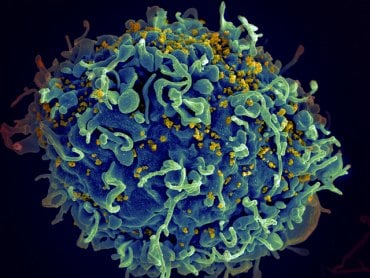The next five years of HIV research should shift gears from the classic single-therapy development model to moving directly from in vitro studies to combination therapy trials, authors argue in a new paper published online today.
The opinion piece–co-authored Dr. Francoise Barré-Sinoussi of the Institut Pasteur who, together with Dr. Luc Montagnier, was awarded the Nobel Prize for discovering HIV and by Dr. Jintanat Ananworanich with the US Military HIV Research Program (MHRP)–was published online in The Lancet HIV.
“Our proposed data-driven approach to combination cure research is designed to accelerate efforts to transform HIV from an incurable disease to one where we can achieve durable remissions,” said Dr. Barré-Sinoussi.
Based on currently available data, it is unlikely that single therapies hold promise for achieving long-term HIV remission. Additionally, determining potentially effective combination therapies remains a challenge. Under the classic model, single therapies are first evaluated for safety and potency in animal models, and then move to human trials–steps that must be repeated when these therapies are included in combinations. According to the authors, this time-consuming approach is highly unlikely to yield significant advances in HIV cure research in the next five years.
In the paper, the authors lay out a roadmap through which parallel animal and human studies could begin immediately with combination cure in animal models, with combinations selected based on in vitro and existing animal and human data. Work could then progress immediately to Phase II human trials. Coordinating efforts in this way would significantly accelerate the research process, enabling scientists to more efficiently identify possible candidates for further research.
According to the authors, concerns over the dearth of information from not having studied investigational new drugs individually could be ameliorated through the use of animal models to evaluate activity of interventions, address biomarkers and perform extensive tissue studies.
Ananworanich notes that “many potential compounds for HIV cure research have been used extensively for research and treatment of autoimmunity and cancers, thus adequate safety data are available.”
The authors point out that it is also critical that the social, behavioral and health aspects of HIV cure research are analyzed in tandem pre-clinical and clinical trials.
If our reporting has informed or inspired you, please consider making a donation. Every contribution, no matter the size, empowers us to continue delivering accurate, engaging, and trustworthy science and medical news. Independent journalism requires time, effort, and resources—your support ensures we can keep uncovering the stories that matter most to you.
Join us in making knowledge accessible and impactful. Thank you for standing with us!

